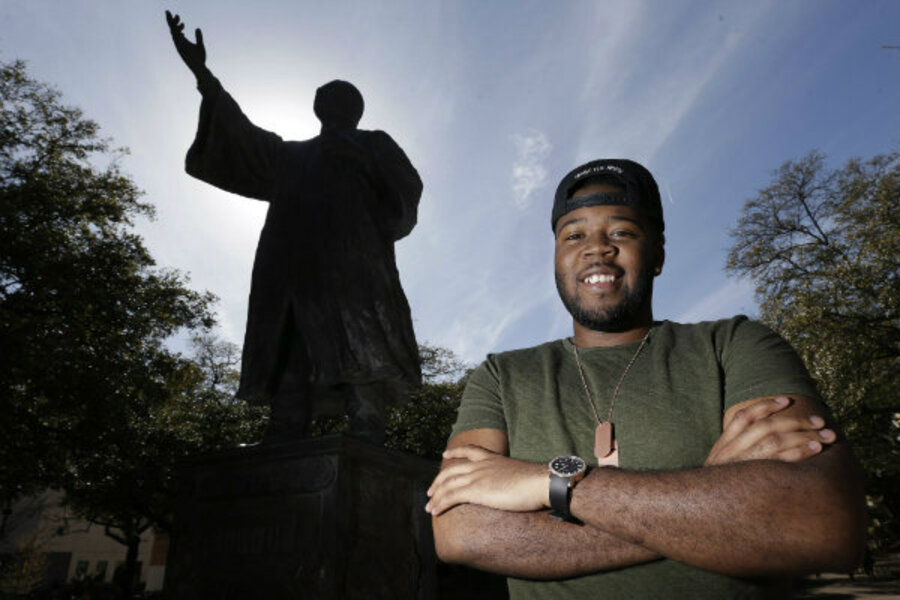Supreme Court ruling on affirmative action shows diversity still matters
Loading...
| Washington
Today’s 7-1 Supreme Court decision on diversity in the University of Texas admissions program reaffirms the crucial role that diversity plays in the strength of America – even while requiring the university to again jump through hoops to prove the validity of its admissions program.
All students – no matter where they live, or what their race or social status – benefit from a diverse educational environment where they learn from the life experiences of their classmates, and can carry these experiences with them through their lives.
Retired Justice Sandra Day O’Connor recognized this 10 years ago, when she wrote that “classroom discussion is livelier, more spirited, and simply more enlightening and interesting” when students have “the greatest possible variant of backgrounds.”
And today the court renewed that principle, even while it sent the case – Fisher v. University of Texas at Austin – back to a lower court to apply a stricter standard on the university to show that “no workable race-neutral alternatives would produce the educational benefits of diversity,” as Justice Anthony Kennedy wrote in the lead opinion.
The lower federal court had earlier ruled in favor of the university, and against Abigail Fisher, who claimed in 2008 that the only reason she was denied admission to UT at Austin was because she is white, even though she would not have met the university’s other admissions requirements.
In a country that has great diversity, many of the nation’s most prominent and important institutions still lag far behind. And let there be no doubt, there are some justices, perhaps even a majority, on the court today who would do away with Justice O’Connor’s principle. They may believe that as a nation, the United States has achieved the promise of true quality, but most Americans know otherwise.
Whites are nearly twice as likely to enroll in college as blacks, Latinos, and Native Americans. And according to recent Census estimates, nearly 65 percent of black adults and 80 percent of Latino adults fail to complete some form of post-secondary education, compared to 50 percent of the white population.
Diverse viewpoints and experiences challenge our beliefs and push us to open our minds to new ideas, new ways, and create a sense of understanding that’s fundamental to success in a modern, wired, global economy. The type of critical thinking that comes from a diverse learning environment is what makes America’s higher education system the best in the world, and prepares graduates to succeed in business, compete in the global marketplace, and contribute to a first class military.
The importance of diversity in higher education is a principled view held not only by universities and minority students. Thirty-seven of the highest-ranking retired US military officials, 57 Fortune 500 companies, more than a dozen religious denominations and groups, and nearly 100 groups representing all racial and ethnic minorities supported Texas’s admission policy.
Today’s Supreme Court decision means that, while the university needs to continue to demonstrate that its methods for creating diversity are appropriate, the court is reaffirming that diversity is a compelling interest. Diversity is a necessary part of ensuring that every college student, regardless of race, can get access to a rich and enlightening educational experience.
Make no mistake: The promise of a quality education – and the creation of diverse learning environments that ensure this quality education – is something universities won’t stop with today. In fact, recent history shows that when courts or new legislative efforts seek to limit or restrict diversity efforts in public schools, colleges seek to find new ways to increase minority admissions. After today, colleges and universities can continue to do so, but Americans are also reminded that the road toward full equality and opportunity in the US is far from finished.
Andrew Blotky is the director of Legal Progress at the Center for American Progress.







